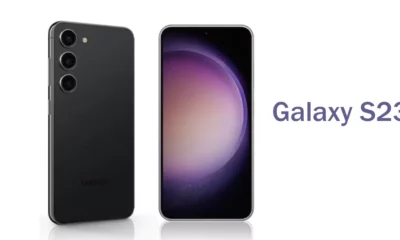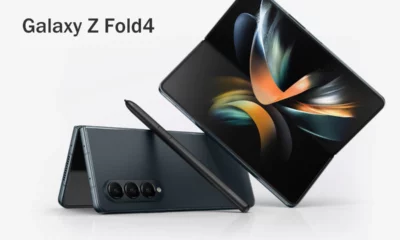How To
How to fix Fingerprint sensor not working on Galaxy S23 Ultra
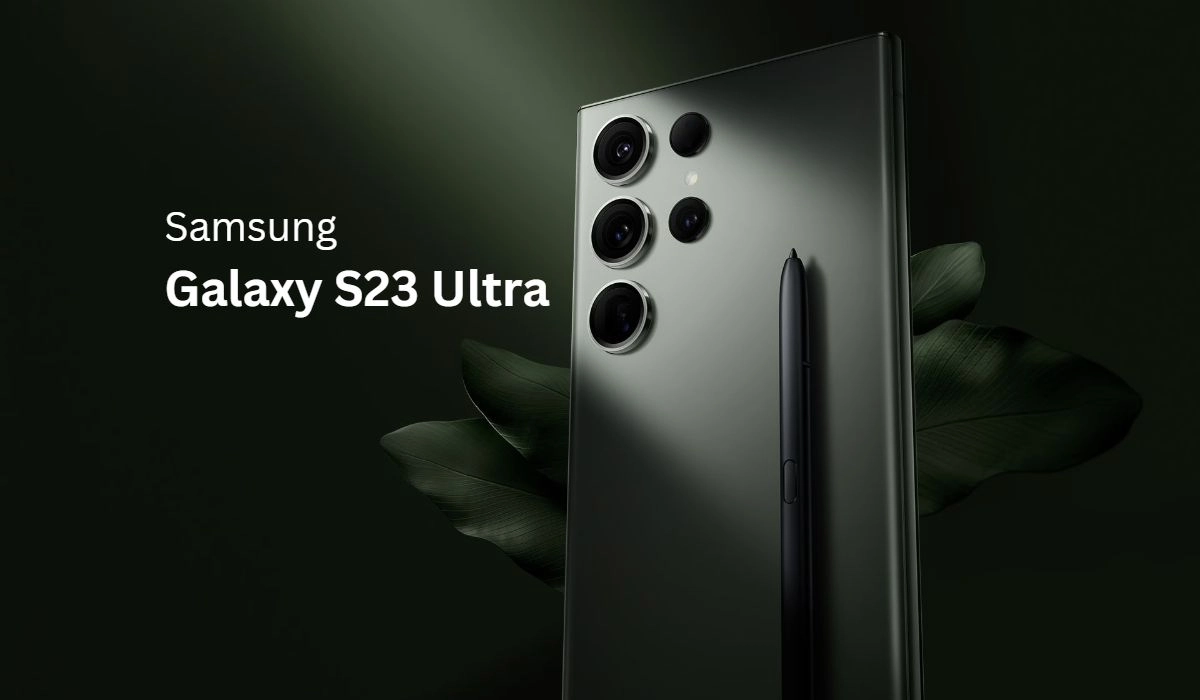
Fingerprint sensors have become a crucial feature in modern smartphones, offering a quick and convenient way to unlock your device and access your personal data. However, sometimes these sensors can stop working, leading to frustration and a loss of security.
If you’re experiencing this issue on your Samsung Galaxy S23 Ultra, don’t worry. In this article, we are sharing full guide on How to fix Fingerprint sensor not working on Galaxy S23 Ultra.
How to fix Galaxy S23 Ultra Fingerprint sensor not working?
Restart your Samsung phone
If your Samsung phone’s fingerprint sensor is not working, you can try restarting your phone. To do this, simply hold down the power button for a few seconds and then tap “Restart.” If that doesn’t work, you can also try powering off your phone and then back on again.
Restart your Samsung phone in Safe Mode
If your Samsung phone’s fingerprint sensor is not working, you can try restarting it in Safe Mode. Safe Mode will disable all third-party apps and only load the default apps that came with your phone. This will help you determine if a third-party app is causing the fingerprint sensor to malfunction.
To restart your phone in Safe Mode, follow these steps:
- Press and hold the Power button until the power menu appears.
- Tap and hold the Power off option until the Safe Mode prompt appears.
- Tap OK to reboot into Safe Mode.
Once your phone has restarted in Safe Mode, try using the fingerprint sensor again. If it still doesn’t work, then the problem is most likely caused by a third-party app and you should try uninstalling any recently installed apps to see if that fixes the issue.
Update your Samsung phone
If your fingerprint sensor is still not working after updating your phone’s software, there may be an issue with the hardware itself. In this case, you’ll need to visit a Samsung service center to have the issue diagnosed and repaired.
Factory reset your Samsung phone
If your Samsung phone’s fingerprint sensor is not working, you can try resetting the phone to its factory settings. This will delete all of your data and settings, so be sure to back up your data before doing this. To reset your phone to its factory settings, go to the Settings menu and select “Backup and Reset.” Then, select “Factory Data Reset” and confirm your action.
Contact Samsung Service centre
If that doesn’t work, try restarting your phone. If the problem persists, you can contact Samsung’s service center for further assistance.
We hope that this article has been able to provide you with some helpful tips and tricks for How to fix Fingerprint sensor not working on Galaxy S23 Ultra. Now you can share your experiences or capture important information without any hassle!
How To
How to enable the swipe to type or cursor control feature on Samsung keyboard?

In the ever-evolving world of smartphone technology, convenience and efficiency are paramount. Samsung, as a leader in innovation, recognizes this and offers users the incredible swipe-to-type and cursor control feature on its keyboard. This intuitive functionality allows you to effortlessly glide your finger across the keyboard, spelling out words with remarkable ease, or precisely navigate through text using a cursor.
This guide will be your key to unlocking the potential of these features, showing you how to enable swipe-to-type and cursor control on your Samsung keyboard. By delving into your device’s settings, you will discover the simple, yet powerful steps needed to harness these capabilities. Whether you’re a fan of swift, gesture-based typing or require pinpoint accuracy in editing text, Samsung’s keyboard offers you the tools to customize your digital communication experience. Join us as we explore the intricacies of enabling swipe-to-type and cursor control, elevating your typing and editing skills to new heights.
Enable the swipe to type or cursor control feature on Samsung keyboard
- Open the Settings menu, scroll down, and tap on the General management option.
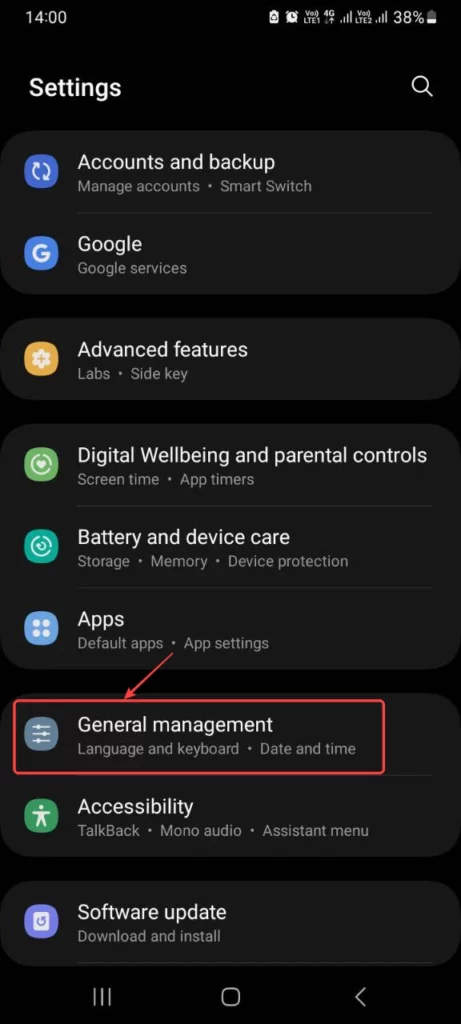
- Then, tap on Keyboard list and default.
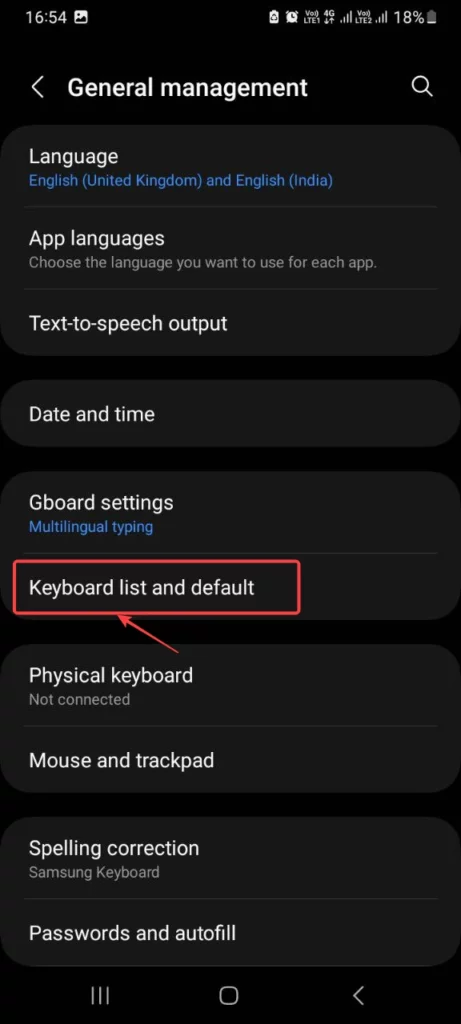
- Now, click on the Samsung Keyboard option.
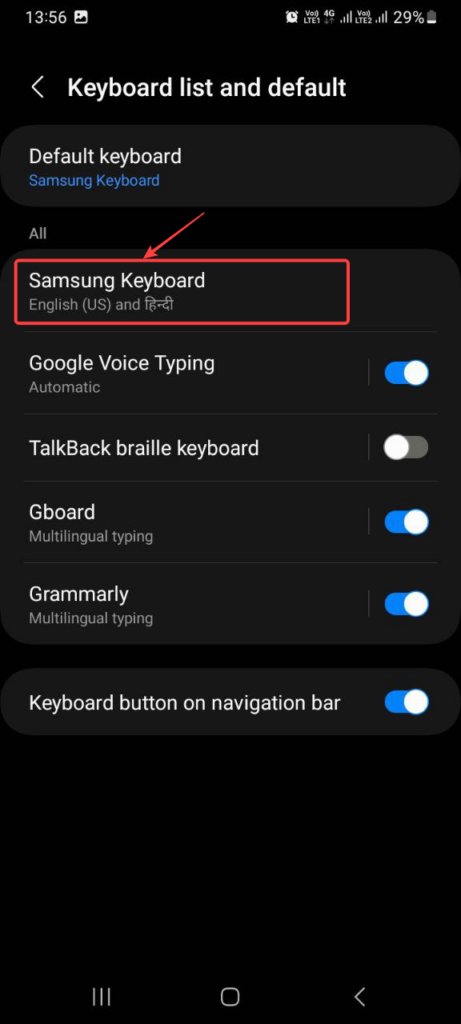
- Here, scroll down and tap on the Swipe, touch, and feedback option.
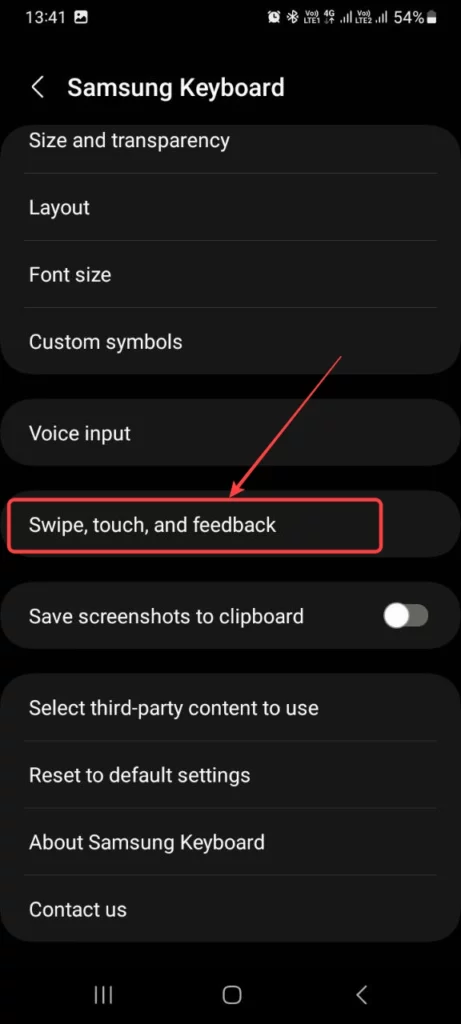
- Click on the Keyboard swipe controls option.
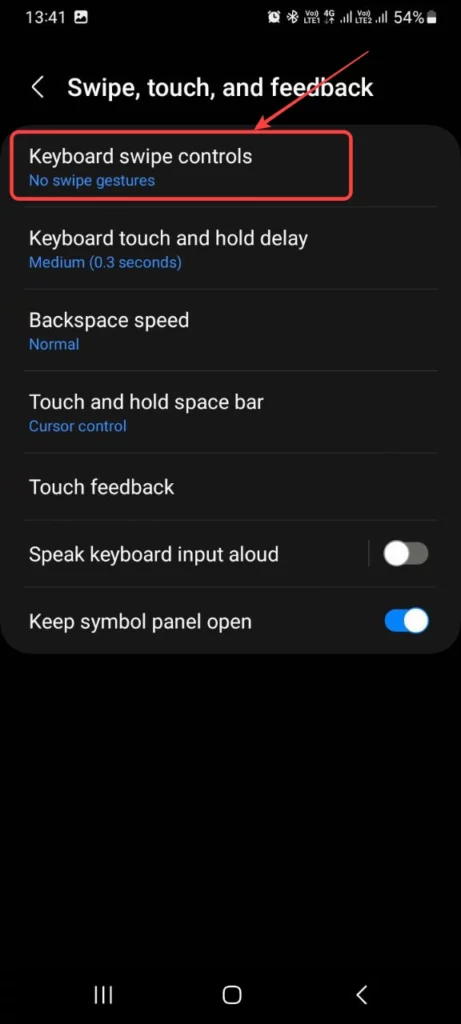
- Finally, you can turn on the Swipe to type or Cursor control feature.
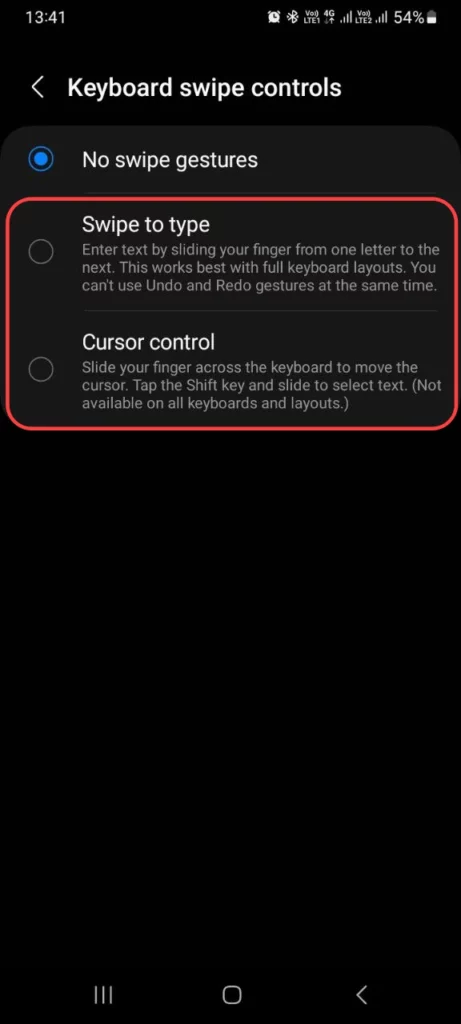
We hope that this article has been able to provide you with some helpful tips and tricks for How to enable the swipe to type or cursor control feature on Samsung keyboard. Now you can share your experiences or capture important information without any hassle!
How To
How to adjust the size of the Samsung Keyboard?

In the realm of smartphone customization, the ability to adapt even the tiniest details can significantly enhance your digital experience. The size of your keyboard, for instance, plays a crucial role in your typing comfort and efficiency. Samsung, a pioneer in user-centric innovations, has provided a solution that allows you to tailor the keyboard size according to your preferences. This guide will walk you through the steps required to seamlessly adjust the size of the Samsung Keyboard, putting the power of personalization in your hands.
By exploring your device’s settings, you’ll uncover the means to resize the keyboard, whether you’re looking to maximize screen real estate for larger keys or seeking a compact layout for one-handed usage. Whether you’re a swift typist or someone who values precision, this functionality empowers you to fine-tune your interaction with your Samsung smartphone. Join us as we delve into the intricacies of resizing the Samsung keyboard, and unlock a new level of comfort and efficiency in your digital communication.
Adjust the size of the Samsung Keyboard
- Open the Settings menu, scroll down, and tap on the General management option.

- Then, tap on Keyboard list and default.

- Now, click on the Samsung Keyboard option.

- Here, scroll down and tap on Size and transparency.
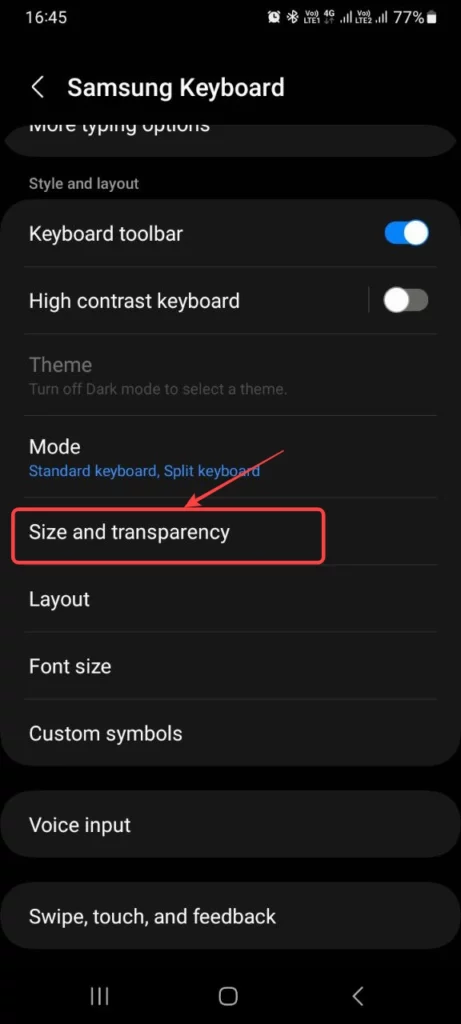
- Finally, you can drag the handles on the sides of the keyboard to adjust its size.
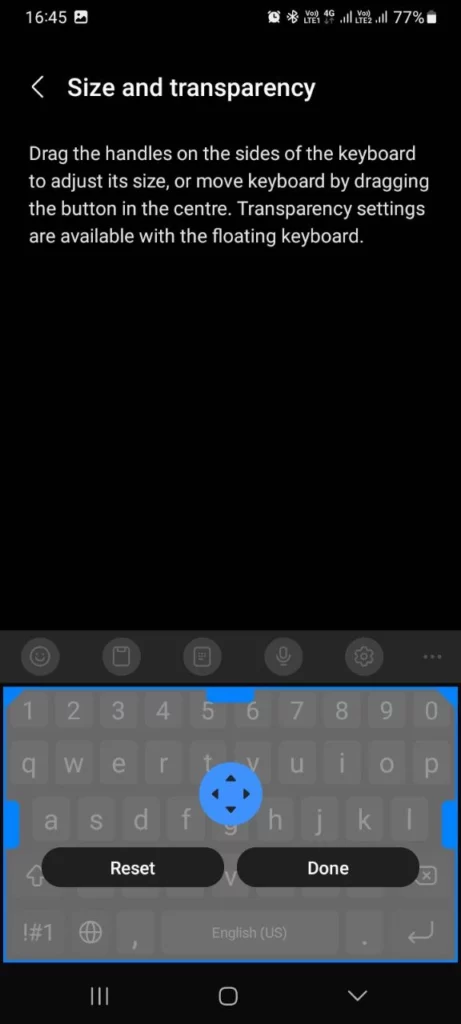
We hope that this article has been able to provide you with some helpful tips and tricks for How to adjust the size of the Samsung Keyboard. Now you can share your experiences or capture important information without any hassle!
How To
How to enable or disable talkback in Smasung smartphone?

n the realm of smartphone accessibility, Samsung has pioneered features that cater to diverse user needs, and “TalkBack” stands as a testament to their commitment. This ingenious feature transforms visual information into spoken feedback, facilitating smartphone interaction for individuals with visual impairments. If you’re looking to seamlessly enable or disable TalkBack on your Samsung smartphone, you’re about to embark on a journey of customization and inclusivity.
This guide will walk you through the steps required to navigate your Samsung device’s settings and toggle the Talkback feature according to your preferences. Whether you’re an advocate of accessibility or require temporary adjustments, the power lies at your fingertips. From enhancing usability for visually impaired users to assisting in specific scenarios, TalkBack opens new dimensions of interaction. Join us as we delve into the intricacies of enabling or disabling talkback , and uncover how Samsung’s commitment to innovation is making technology accessible to all.
Enable or disable talkback in Smasung Smartphone
- In the Settings menu, scroll down and click on Accessibility.

- Then, click on the TalkBack option.
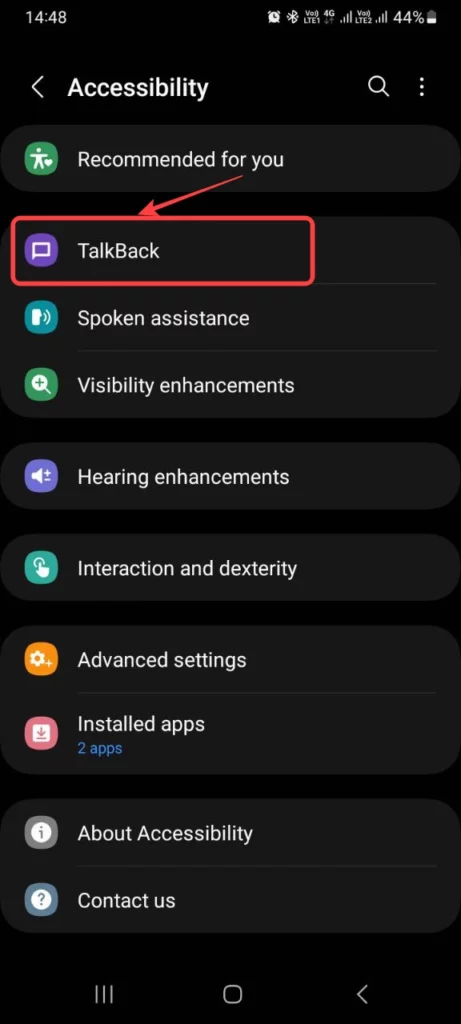
- Now, tap to switch on the TalkBack.

- Finally, choose Allow to enable TalkBack.
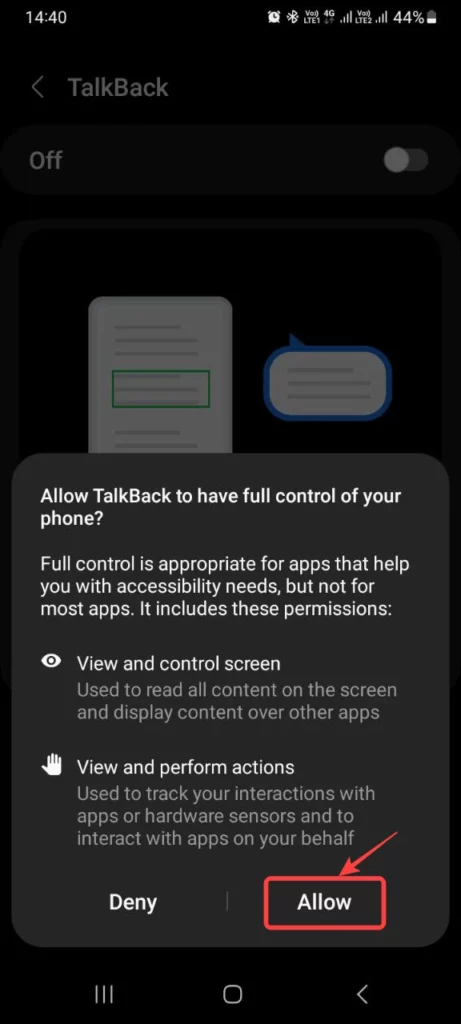
We hope that this article has been able to provide you with some helpful tips and tricks for How to enable or disable talkback in Smasung smartphone. Now you can share your experiences or capture important information without any hassle!





